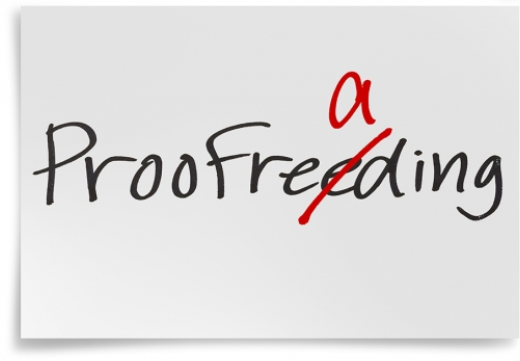Abstract: This article will cover the 7 most common multilingual SEO mistakes and show you the best practices that will help you to avoid them. An increase in globalization and digitalization has made companies more interested in opening to foreign markets. The first step in this direction is creating a multilingual website. However, many entrepreneurs translate their websites into the selected language, forgetting about SEO. It is a big mistake that can cost the company a lot. So, what should you do when you decide to create a multilingual website?
What is Multilingual SEO, and why is it important?
Multilingual SEO is optimizing a website’s content for the different languages it is available in. This approach helps users find the needed language version of the website in a search engine when looking for related information.
SE Ranking: An example of a multilingual website
Multilingual SEO is crucial because it helps users to find your site quickly, increasing your chances of reaching a larger audience (customers, readers, etc.). Proper optimization can greatly help you appear in a search engine in different locations and languages. Moreover, creating a multilingual SEO strategy based on proven solutions and expert recommendations can help build trust and improve user experience.
Now, let’s see how to organize your multilingual website in terms of SEO.
1. Using the same keywords or their direct translation
When it comes to SEO, proper keyword research for each website version is crucial. You should avoid using the same keywords (for example, targeting English ones) on different versions of your website. Additionally, the direct translation is not a good idea because people can search for the same phrase using other, more common words in their language.
Therefore, you should conduct separate keyword research for each language in combination with the location you want to target. To do this effectively, it is worth using advanced SEO tools that offer solutions such as keyword planner by SE Ranking. It allows you to conduct separate keyword research for each country and analyze key metrics such as search volume or difficulty for the chosen region.
2. Literal translation
It is worth emphasizing that creating a multilingual website is much more than just translation. Forget about using tools such as Google Translate for creating your content and remember that sometimes a word can have a completely different meaning in another language. To be successful, you need to understand your audience, their way of thinking, mentality, and see what words they use to search for particular items.
The solution could be working with a professional translator who is a native speaker and will make the language you use fluent and natural. It is essential to match cultural norms and values with your target market, so it is a good idea to work with people who will be able to tailor content accordingly.
When it comes to SEO, you need to do proper research of your organic SEO competitors for each localization and analyze what their content looks like and how it’s structured before translating your website. Also, use the keywords found in the previous step for all important elements of each site version.
In addition, make sure you take into account all the region-related details. For example, if you run an international online store, displaying product prices in the country’s currency whose language you are currently displaying is essential. The same goes for the date or time format used in a given country.
3. Improper URL structure
Another common multilingual SEO mistake is improper URLs, which lead to duplicate content and can significantly affect your site in general. You should avoid using parameters like company.com?lang=en because it makes it difficult for users to recognize geotargeting from URLs.
It would be best to consider introducing new, unique URLs for pages in different languages to avoid these problems. Moreover, this solution is recommended by Google, so it is definitely worth paying attention to. It is crucial because it ensures that customers from a particular region are directed to the correct version of your website.
What about the domain structure? Several solutions will work for you:
- Get ccTLDs (country code Top Level Domains), for example – company.pl for Polish visitors, company.fr for French visitors, etc.
- Create subdirectories, for example – company.com/pl/
- Generate subdomains, for example – pl.company.com
If you use WordPress, you can use ready-made plugins such as The TranslatePress plugin that help you to make subdirectories for each language.
4. Not adding the hreflang attribute
When you implement separate language versions within a single domain, you should inform the search engine that your website offers various SEO language versions. However, many companies do not know how important it is and do not have any proper solutions.
How to avoid this SEO multi-language mistake? First of all, you need to add hreflang attributes in the page’s code.
Hreflang is an HTML attribute used by multilingual websites that shows the connection of website language versions for a search engine. It should be added in the header of the website and contain the code below:
<link rel=”alternate” hreflang=”pl”href=”https://company.com/pl/”/>
- link rel = “alternate”: indicates an alternative page’s version, for example, pl — Polish.
- hreflang = ”pl”: indicates language code (in our case, it’s Polish)
- href =”https://company.com/pl/”: URL of the website available in the selected language
It is worth mentioning that if you publish non-HTML files (e.g., PDF) on your website, you can use an HTTP header and include the following code:
Link: <http://pl.company.com/file.pdf>; rel=”alternate”; hreflang=”pl-PL”, <http://pl.company.com/file.pdf>; rel=”alternate”; hreflang=”pl”, …
- http://pl.company.com/file.pdf – example of your file URL
- pl — example of language code
Interestingly, the hreflang attribute also allows you to specify the region for which the subpage will be relevant. This can be helpful when running an international online store. You can create alternative versions of pages with identical content in English for customers from England, the States, and Australia, where the only variable information will be about currency or shipping costs.
5. Auto redirect based on IP address
Another mistake is using automatic redirection to a particular language version based on the user’s IP. Google does not recommend this solution because there is a risk that both users and robots will not reach all versions of a given page in such a situation or will reach an irrelevant one. Most of Google’s indexing originates in the USA, so Google does not recommend using IP addresses.
Instead, it would be best to use the solutions mentioned in the points above, i.e., using subdomains or subfolders with hreflangs.
6. Optimizing a website for only one search engine
Remember that not all internet users use Google. Your users may use many other search engines such as Yahoo, Bing, Baidu, or Yandex. You can check this in many ways, for example, in Google Analytics.
Thus, before creating an SEO strategy, you need to conduct research to find out what the most popular search engine is in your targeted location. For example, the most popular search engine in China is Baidu, and Yandex is the most commonly used search engine in Russia.
7. Forgetting to add separate metadata and alt text for each language
One of the common mistakes made when creating different language versions of a website is to focus only on translating the content visible directly on the page. Many companies forget that meta titles and descriptions or alt texts are also important.
If a potential customer sees a snippet in the search results in a different language than their query, they may have doubts about whether a given link contains content consistent with their search intent.
Besides, ignoring these elements can negatively influence page ranking. Remember that using the right keywords in meta titles and alt tags can be an effective way to get better search engine positions.
Summary
In the era of globalization, language and location barriers are no longer a problem. The Internet opens up new possibilities for reaching a broad audience, and so many companies and individuals have decided to take up this challenge. Proper implementation of multilingual SEO best practices on websites gives you many new opportunities. Whether you want to reach a new market, a larger audience, or gain exposure to a foreign culture – if you follow our tips, you will achieve success.
About the author

Natalia Piskorovska is an Outreach Specialist at SE Ranking based in Lviv, Ukraine.






Thank you for sharing this informative article. I made some mistakes while doing international SEO by just not adding the hreflang attribution that I struggled to reach my target audience.